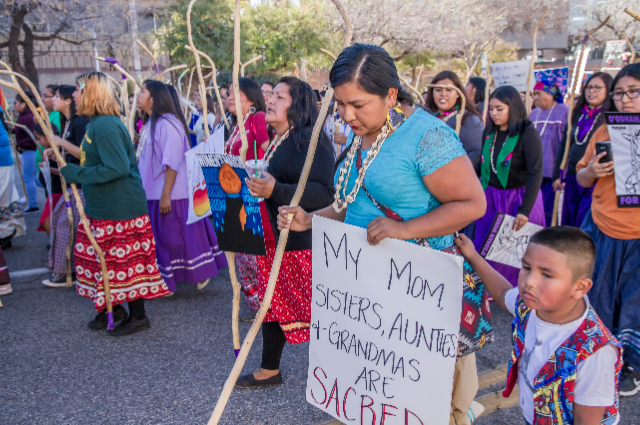
Photo by Dulcey Lima on Unsplash
A Canadian Tragedy:
In Canada, a country that prides itself for celebrating its diversity and human rights, there exists an ongoing, distressing tragedy of violence against Indigenous women in Canada. This major issue is not just another story in Canadian history but an ongoing crisis that represents systemic issues still rooted in society. The violence against Indigenous women is a complex problem deeply connected to the history of colonialism, racism, and systemic discrimination. This issue requires urgent attention and thoughtful action to address the root causes and bring about meaningful change.
A Disproportionate Crisis:
The history of violence against Indigenous women in Canada points to a frighteningly disproportionate rate compared to non-Indigenous women. Indigenous women are more likely to face this challenge and be victims of mental, physical, and sexual violence. Statistics reveal that they are 12 times more likely to be murdered or go missing compared to non-Indigenous women in Canada (Crown-Indigenous Relations and Northern Affairs Canada, 2024). This discrepancy highlights the ongoing impact of racism and inequality that Indigenous communities continue to face. This violence is not just physical but is also deeply rooted in historical and ongoing forms of maltreatment.
The Legacy of Colonialism:
This violence didn’t appear out of nowhere; It has deep roots in Canada’s colonial past. When European settlers arrived, they didn’t just take Canadian land but also tried to erase its entire culture. Residential schools are a prominent example of this. These schools didn’t just separate children from their families but also took away their language, culture, and identity, leaving them with deep intergenerational trauma. The trauma from these schools and other harmful policies has contributed to the violence that still affects Indigenous communities. It’s a painful legacy that continues to impact the lives of Indigenous women and girls.
Raising Awareness: The Missing and Murdered Indigenous Women and Girls (MMIWG) Movement
Thankfully, the voices of the Indigenous communities are being heard more now than ever before, in part because of the Missing and Murdered Indigenous Women and Girls (MMIWG) movement. This movement has brought much needed attention to the countless Indigenous women and girls who have gone missing or been murdered, often with little response from authorities. The Missing and Murdered Indigenous Women and Girls (MMIWG) movement has become a powerful force for change, demanding justice for victims and their families and shining a light on the systemic failures that allow this violence to continue. Through marches, protests, and storytelling, this movement ensures that these women are not forgotten, and that their stories are heard.
The Need for Government Action:
Although awareness is important, it's only the beginning. The government needs to take real action immediately to address the systemic injustices that contribute to violence against Indigenous women. This means changing policies, increasing funding for Indigenous-led organizations, and strengthening support systems like shelters and counseling services. The government must also work to rebuild trust between law enforcement and Indigenous communities, making sure these cases of violence are taken seriously and are professionally investigated. Only through concrete actions can we hope to create a safer and more just society for Indigenous women. But this awareness and action needs to extend beyond just the law enforcement and those directly affected by it. It must percolate through the wider community, challenging systemic racism and fostering a culture of respect and understanding that upholds the dignity and rights of Indigenous women everywhere.
Our Role in Raising Awareness
As we know, this isn't just a problem for the government to solve, whereas, it's something we all need to care about. We can raise awareness and support the fight against this violence by participating in workshops, community-led events, and protests that focus on Indigenous issues. Educating ourselves and others about the history and the ongoing struggles of Indigenous people is another important way to make a difference. By listening to and understanding Indigenous voices, supporting their initiatives, and standing in unity with them, we can all contribute to making Canada a place where Indigenous women are safe and valued.
Conclusion: A Shared Responsibility
The violence against Indigenous women in Canada is a national tragedy that reflects much larger issues of racism, discrimination, and colonialism. It’s a huge crisis that demands action, both from our government and from each of us as individuals. By supporting the efforts, advocating for systemic change, and promoting education awareness, we can begin to address this issue and work towards justice and healing. The time to act is now, and it's up to all of us to make a difference. Every little bit counts and we must understand that our contribution and our voices matter. Together we can make a difference that will ensure compassion and tolerance towards one and all.
